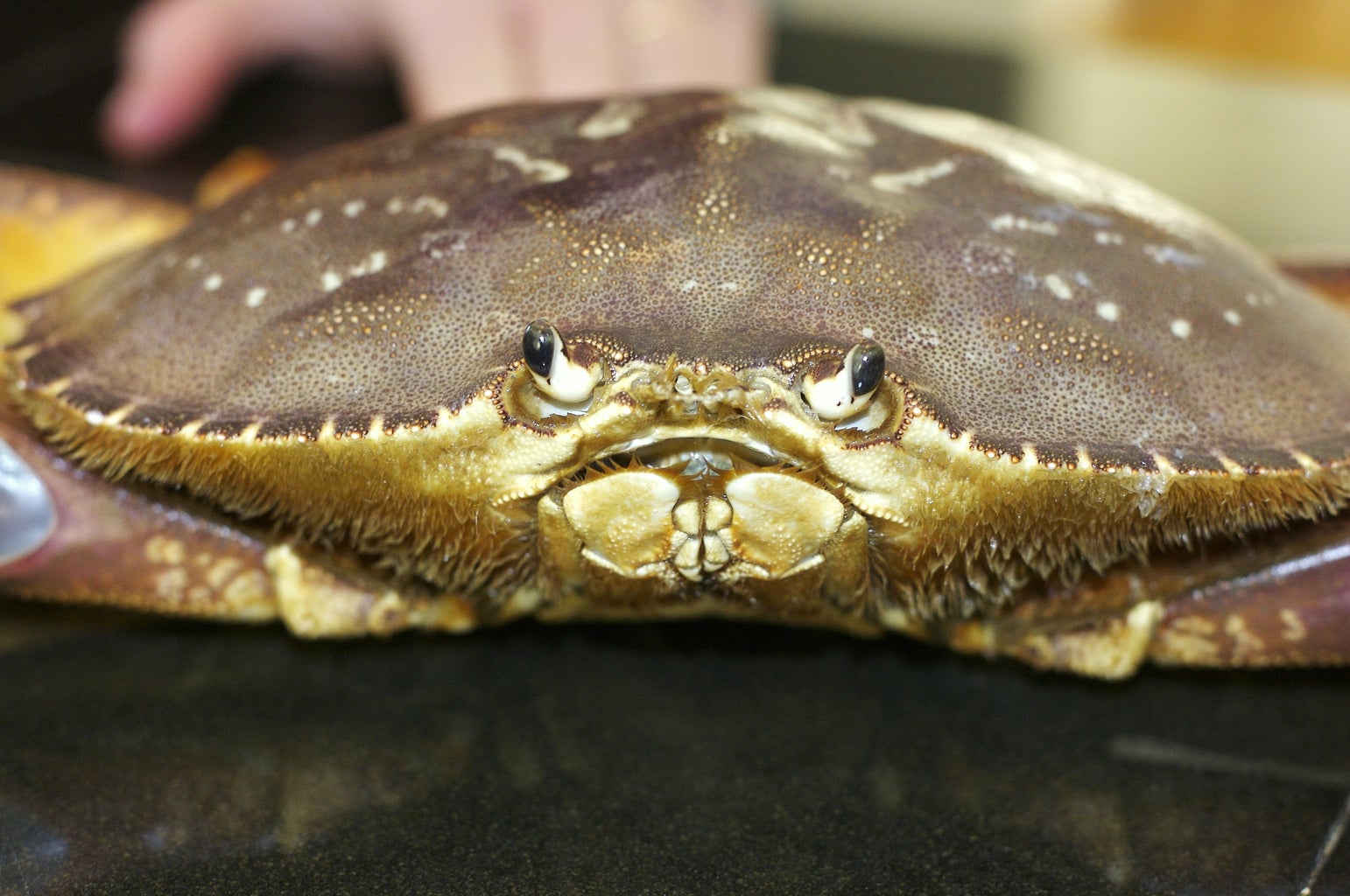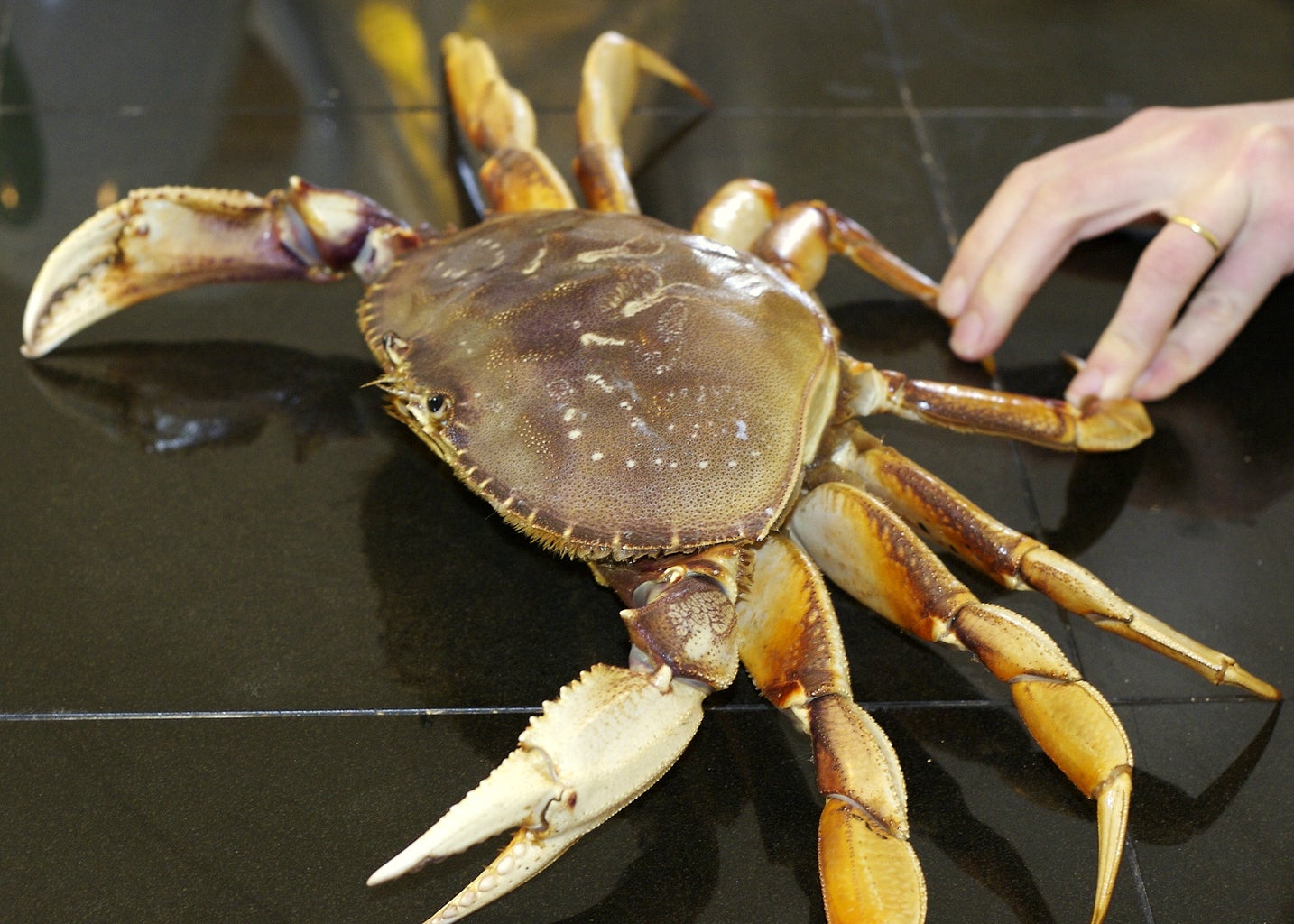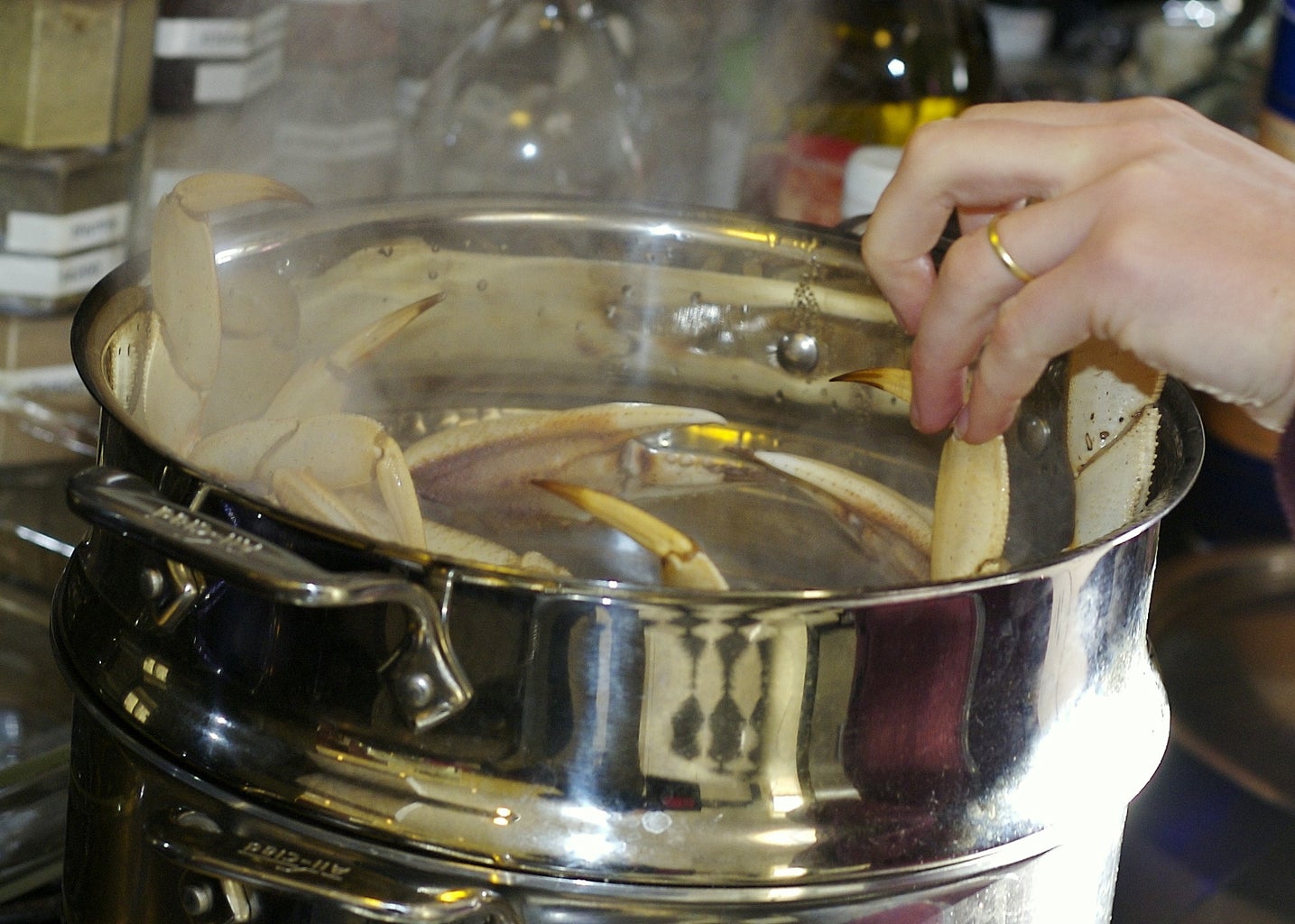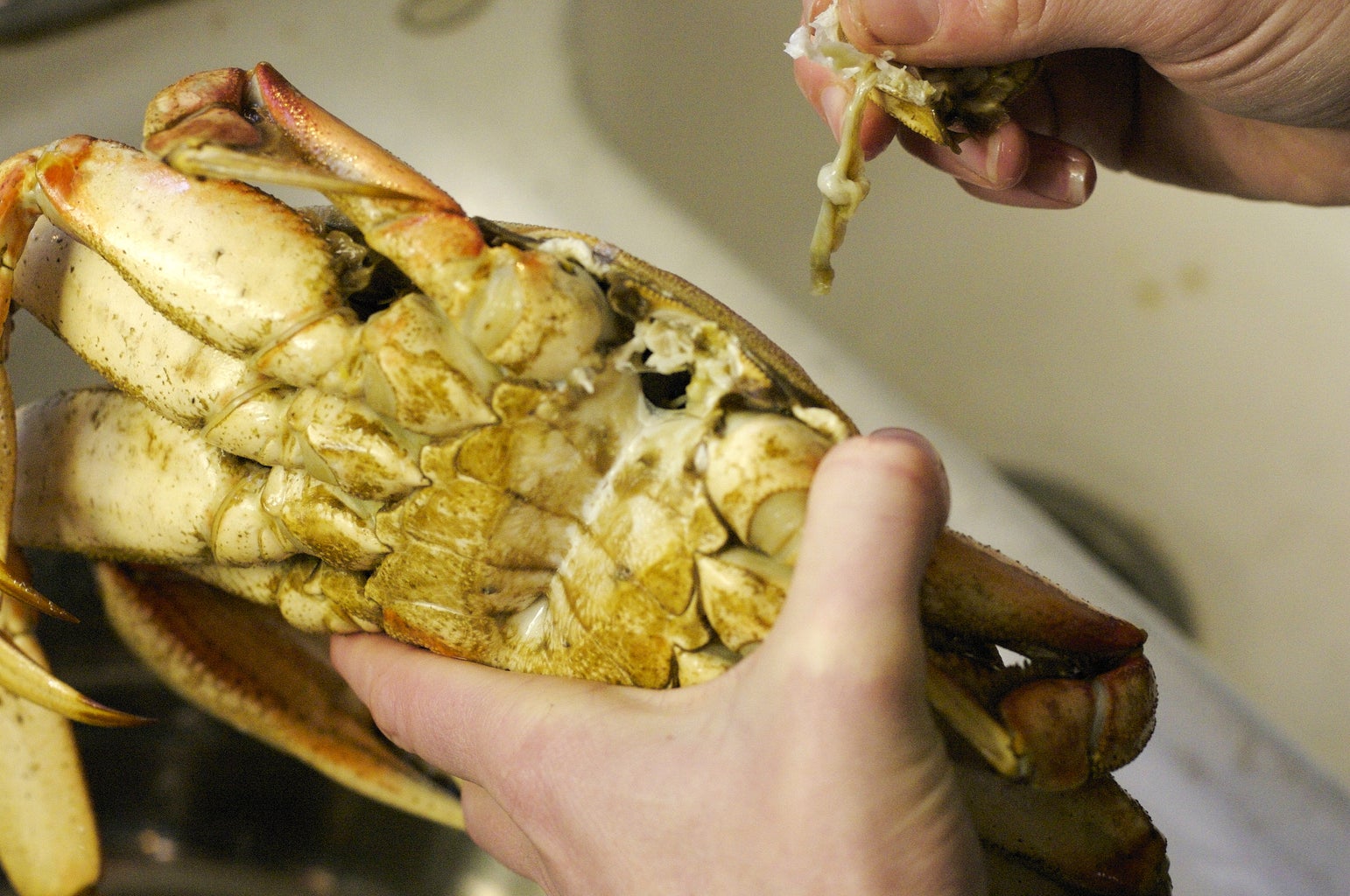Dungeness crab is a Pacific Northwest specialty known for its tender, sweet meat. While the flavor makes all the effort worthwhile, cleaning cooked crab can be intimidating with the hard shell and spindly legs. Follow this simple step-by-step guide to learn proper techniques for cleaning whole cooked Dungeness crab.
Why Clean Crab After Cooking?
While some recipes call for cleaning raw crab prior to cooking there are good reasons to wait until after cooking
-
Cooking intact helps retain juices and moisture in the meat The shell forms a natural cooking vessel.
-
It is easier and safer to handle cooked crab versus aggressive live crab!
-
Cooked crab shells are more brittle, making cleaning easier.
-
Waiting allows enjoyment of the whole crab experience – juices, fat, and roe.
As long as the crab is vigorously scrubbed beforehand, cleaning after cooking is ideal. Now let’s get cracking!
Step 1: Cool the Crab
After steaming or boiling, transfer cooked crab to a rimmed baking sheet or large platter. Tent loosely with foil and allow to rest 10-15 minutes. This allows the meat to set up for easier handling when cleaning.
Use tongs to test the temperature and ensure crab is cool enough to touch. Trying to clean hot crab can lead to burning fingers and slipping which makes a mess. Patience pays off here.
Step 2: Flip the Crab Over
Once cooled, turn the crab over so the belly and apron flap are facing up. For orientation, the pointed apron looks like the Washington Monument. The wider, rounded dome on the other side is the back.
Arranging the crab properly sets the stage for systematically cleaning each area without missing important parts. The goal is accessing all the meat neatly and efficiently.
Step 3: Remove the Apron
The apron is the small, triangular abdominal flap on the crab’s underside. Simply use your hands to pry this off the crab body and discard.
Under the apron is a handy hole you will use to later crack open the body for full access to the meat. Removing the flap now prevents any interference later.
Step 4: Scoop Out Inedible Parts
Inside the body cavity are feathery gills or “lungs”, the crab’s stomach, and other inedible viscera. Using a small spoon or your fingers, scoop these out and discard. Be thorough but avoid damaging the nearby meat.
Take care not to rupture the green hepatopancreas or tomalley – this is the crab’s fatty liver and pancreas which is considered a delicacy! Set it aside in a bowl to enjoy later.
Step 5: Crack the Body & Legs
With the crab underside up, place your thumbs into the body cavity hole created when removing the apron. Firmly press down and outward to crack open the body in half lengthwise.
Use a wooden mallet or small hammer to gently crack the legs and knuckles. Twist and pull legs away from the body to remove. Use metal crab crackers on thicker parts if needed. Work over a platter to catch any flying pieces!
Step 6: Pick Out the Meat
Now that crab is cracked open into manageable, meaty segments, use your hands or a seafood fork to pick out the flesh. Carefully break apart the body and leg pieces to extract all the hidden morsels inside.
Go slowly and deliberately to get as much meat as possible. Place meat in a bowl as you go to keep it from scattering. Discard any remnants when finished. Enjoy the crab meat on its own or use it to create delicious recipes!
Helpful Tools and Tips
Having the right tools can make cleaning crab much easier:
- Heavy duty crab mallet or hammer
- Metal crab crackers for thick shells
- Seafood fork or pick for pulling meat
- Small spoon for scraping out viscera
- Crackers or picks for digging into legs
- Rimmed sheet pan or platter for working over
Other useful tips:
- Let crab cool completely before cleaning
- Work over a rimmed sheet to contain mess
- Take time to pick out all the leg and body meat
- Watch videos to see proper technique
- Enjoy the hepatopancreas (tomalley) on its own
- Refrigerate or freeze leftover meat immediately
With a little practice, you will get proficient at extracting all the sweet meat from Dungeness crab. Savor the fresh crab alone or use it to make countless appetizers, main courses, and more. Enjoy this Pacific Northwest treat!
Step-by-Step Cleaning Instructions
Follow these steps for perfectly cleaned Dungeness crab:
Step 1: Cool
- Transfer cooked crab to sheet pan
- Tent loosely with foil
- Allow to cool 10-15 minutes
Step 2: Flip
- Turn crab underside up
- Locate apron flap and body cavity
Step 3: Remove Apron
- Pry off apron flap
- Discard flap
Step 4: Scoop Out Viscera
- Use spoon or fingers
- Remove lungs, stomach, etc.
- Reserve tomalley
Step 5: Crack Shell & Legs
- Crack body and legs using hands or mallet
- Twist legs to remove from body
Step 6: Pick Out Meat
- Use hands or pick to remove flesh
- Work slowly to get all meat
- Discard empty shells
Follow these steps in order and you will be a cleaning pro in no time!
FAQs About Cleaning Dungeness Crab
Here are answers to some frequently asked questions about cleaning cooked Dungeness crab:
Why clean crab after cooking rather than before?
Cleaning crab before cooking can cause the meat to dry out. Leaving intact helps retain moisture and flavors. The shell also protects the meat during cooking.
What tools do I need to clean cooked crab?
Handy tools include a mallet/hammer for cracking, metal picks for stubborn shells, small spoon for scooping out viscera, and picks for pulling out meat.
Is it safe to eat the green stuff inside a crab?
Yes, the green hepatopancreas (or tomalley) is considered a delicacy! It has a rich, creamy texture. Just avoid the feathery gills and stomach.
What should I do with the leftover shells?
You can add empty crab shells to stocks or seafood boils for flavor. Otherwise, they can simply be discarded. Compost if available!
How can I use the removed crab meat?
Picked Dungeness crab meat is amazing on its own, in seafood salads, pasta dishes, crab cakes, or stirred into dips and spreads. Get creative!
How long does cleaned crab meat last in the fridge or freezer?
Refrigerate fresh crab meat up to 3 days. For longer storage, freeze crab meat in airtight bags for 1-2 months.
With these tips, techniques, and answers, you can master cleaning cooked Dungeness crab like a pro! Let us know if you have any other crab cleaning questions.

Step 1: Get a Fresh Crab



There are many options. 1) Go crabbing. Set up some crab traps and get your fishing license. This should be easy if you have a boat or know someone who does. If not, consider getting a free boat. 2) Buy a fresh crab. I got mine at the Oakland Grand Lake market, but yours might have a stand selling fresh crab. Seafood shops, yuppie grocers, and asian grocery stores may also carry fresh crab. 3) Buy a pre-cooked crab. It’s not the best, but it will work if you can’t find a live source or don’t want to deal with live pinchers. In any case proceed to step 4 to clean your crab. Note that a happy crab will be active and feisty when disturbed. Take care to grab the back of the shell when you pick him up with tongs or your hands. The crab can pinch you even though his claws are pretty far back under his body. Your upper fingers are safe. To stop the crab from moving, you can also grab a couple of back legs on each side. Just be careful not to break them off.
*youre only allowed to keep and eat the males


Steam or boil your crab at ~7-8 minutes/pound, lid on but cocked to allow a bit of venting. I steamed mine because I have a big steamer insert and steam lowers the amount of water that stays in the body. But boiling will work just fine, and more people have big pots than big steamers. Set your timer for when the water boils again if you’re adding a lot of crabs. Base your number of minutes on the average crab weight, not the sum total. Round times down whenever necessary; raw/undercooked crabs can always be cooked further, while overcooked rubbery crab is unsalvageable. Thankfully theres a decent margin for error in crab-cooking. If youre boiling, you can add some seasonings to your water. Sea water or salt should be used. A bay leaf, chunks of celery and carrot, peppercorns, and any other whole spices you have on hand should also be added. Pre-mixed crab boil seasonings are available, but not necessary. Notes from the comments: – Use the fact that crabs are cold-blooded to your advantage! Putting them in the fridge or freezer right before you use them will slow down their metabolism enough that they are easy to handle. – You can clean your Dungeness crabs before cooking. This keeps the mess out of the pot and allows for more crabs in the space. All you have to do is chill the crab as described above, then follow the steps 3–9 and cook it as described below. However, this approach does require vivisection, which freaks some people out even if the crabs arent moving. Take your pick. Also, if you cleaned and cut your crabs in half ahead of time, weigh them again (average weight of each half-crab) to find out how long to cook them.
—In many countries and states, you have to take your crabs home before you break them up. This way, any passing fisheries officer can check them to make sure they are the right size. If you break them up while you’re still on the boat, it could be seen as an attempt to sneak off with crabs that are too small.
Step 4: Remove the Apron


